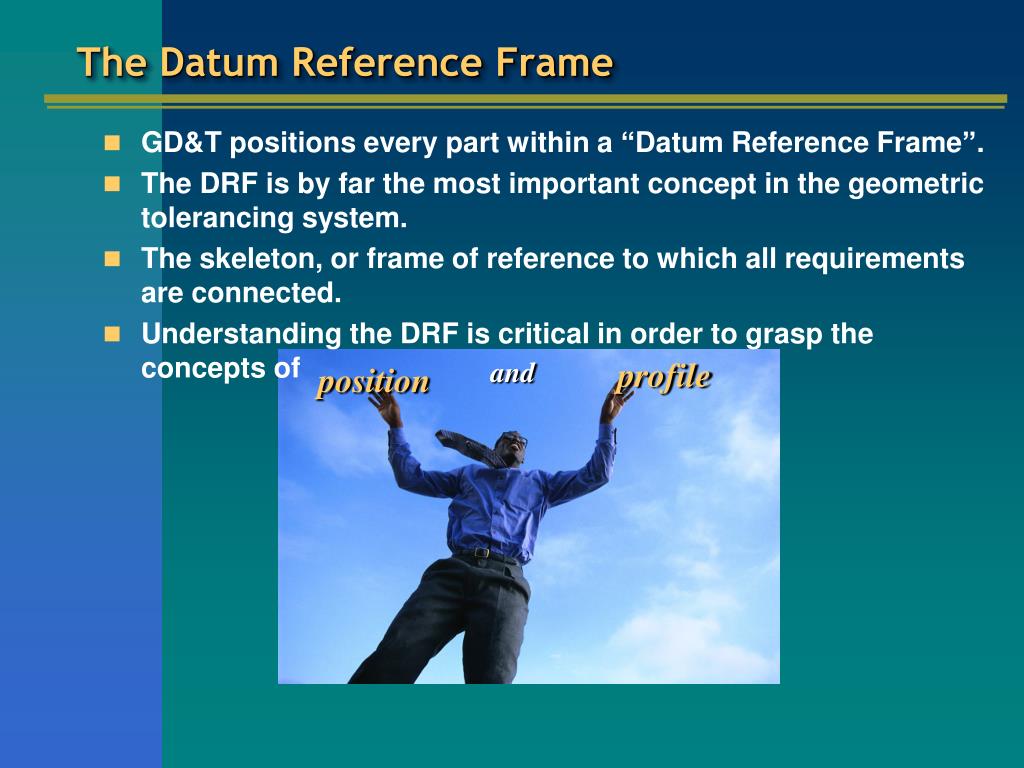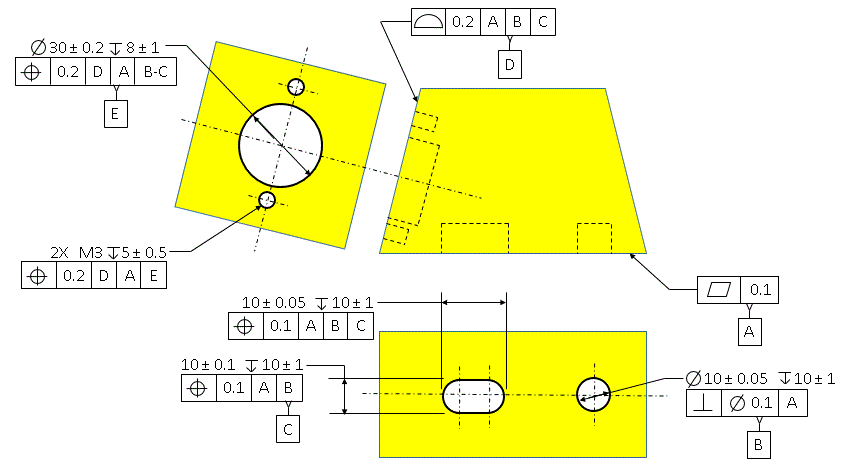


This statement can be argued with because practicality sometimes rules but the truth is that the closer we look, the closer we inspect a real-world feature, the more differences we’ll find. I’ll borrow a comparison to say actual part features are like snowflakes, no two are alike. That uniqueness makes each part, as the term implies, different. Like some other things we’ve looked at an actual part feature has uniqueness.

In the case where a feature is used as a datum, it is called a datum feature. All feature definitions must have applied tolerances and those tolerances always manifest as imperfect features. However when that frame is adapted to a real-world part the story changes. A datum reference frame is composed of three mutually perpendicular planes, both perfectly perpendicular with each other and each perfectly planar. Datums in the perfect world are defined as perfect things. Datums, as we’ve seen with some of our other terms, have different definitions in the perfect world and real world. Datums provide engineers and countless manufacturing technicians a starting point or reference, fixed on a feature or features of a part, that is used to create and orient the 3-dimensional space in which that part exists. Accomplishing the definitions of both the geometry and tolerancing requires a fairly complex set of rules and procedures which include the very fundamentally indispensable use of datums.


 0 kommentar(er)
0 kommentar(er)
